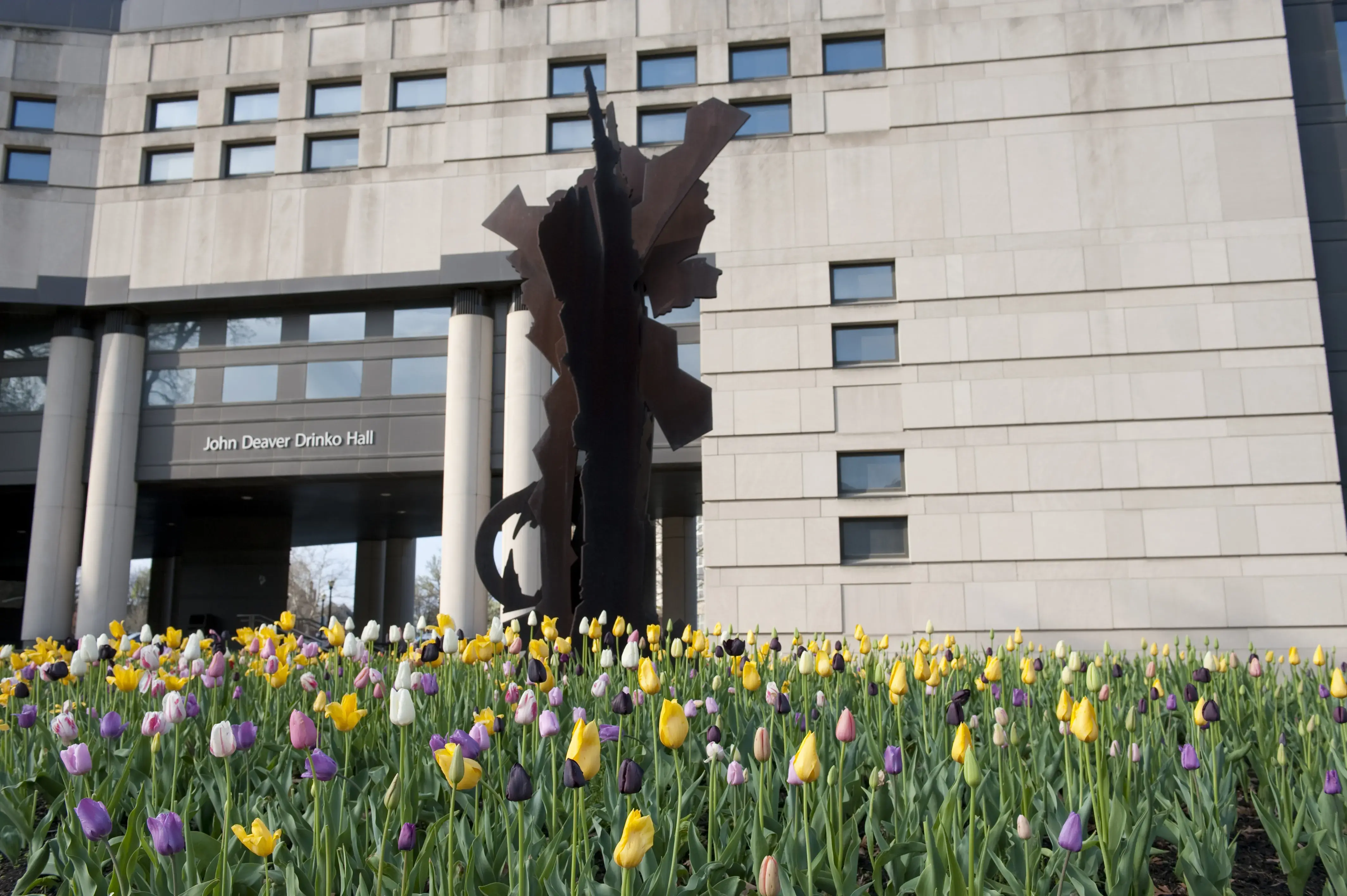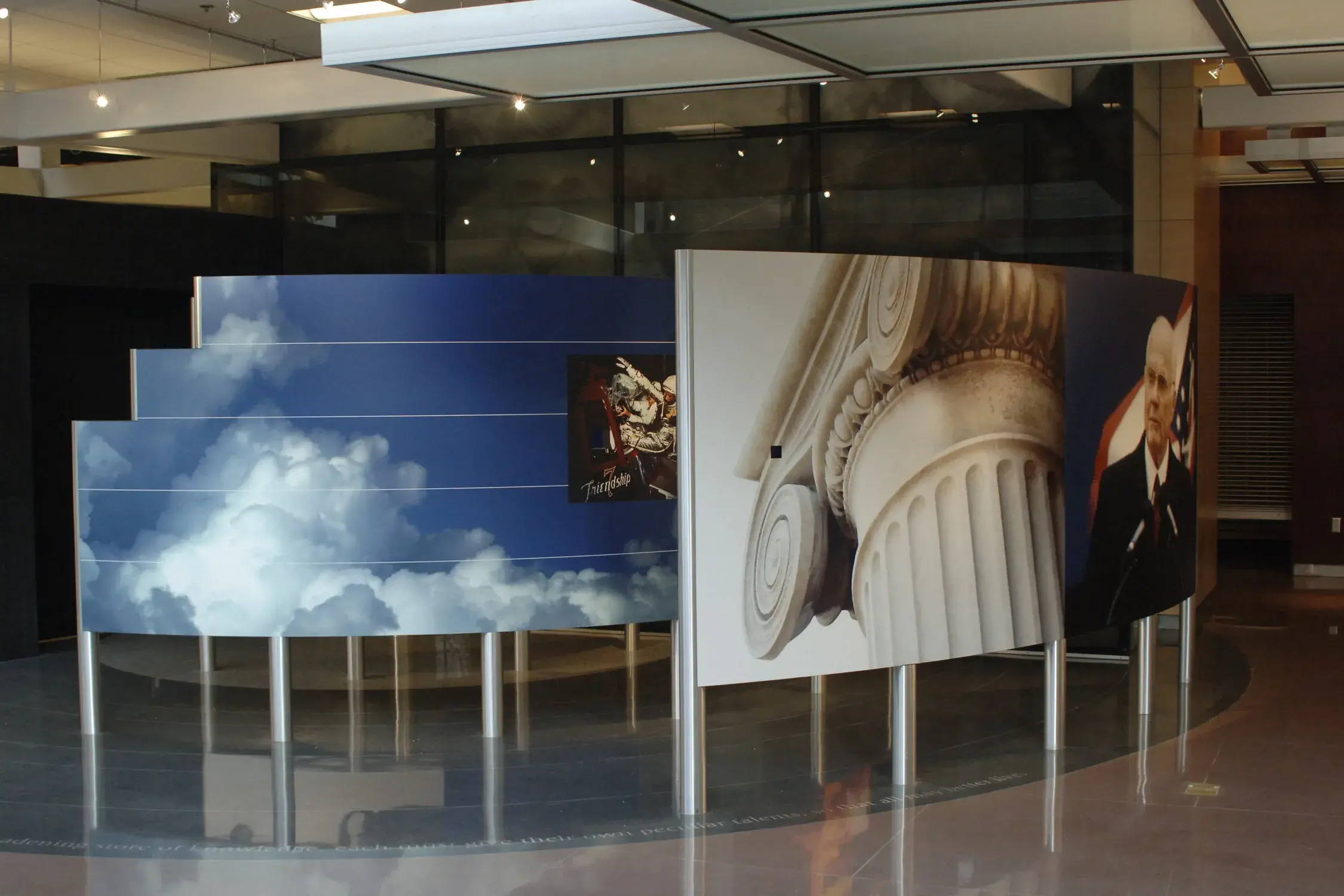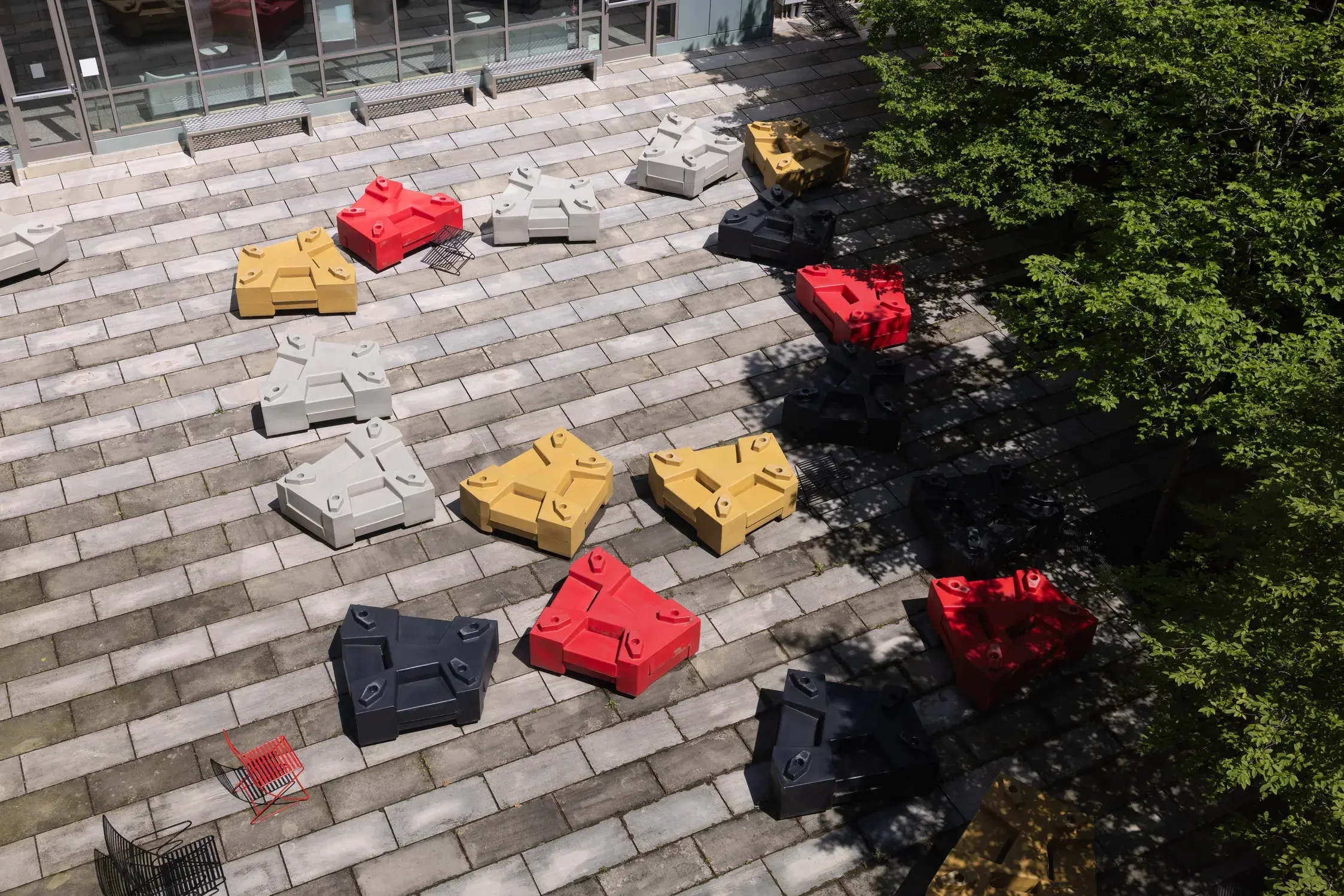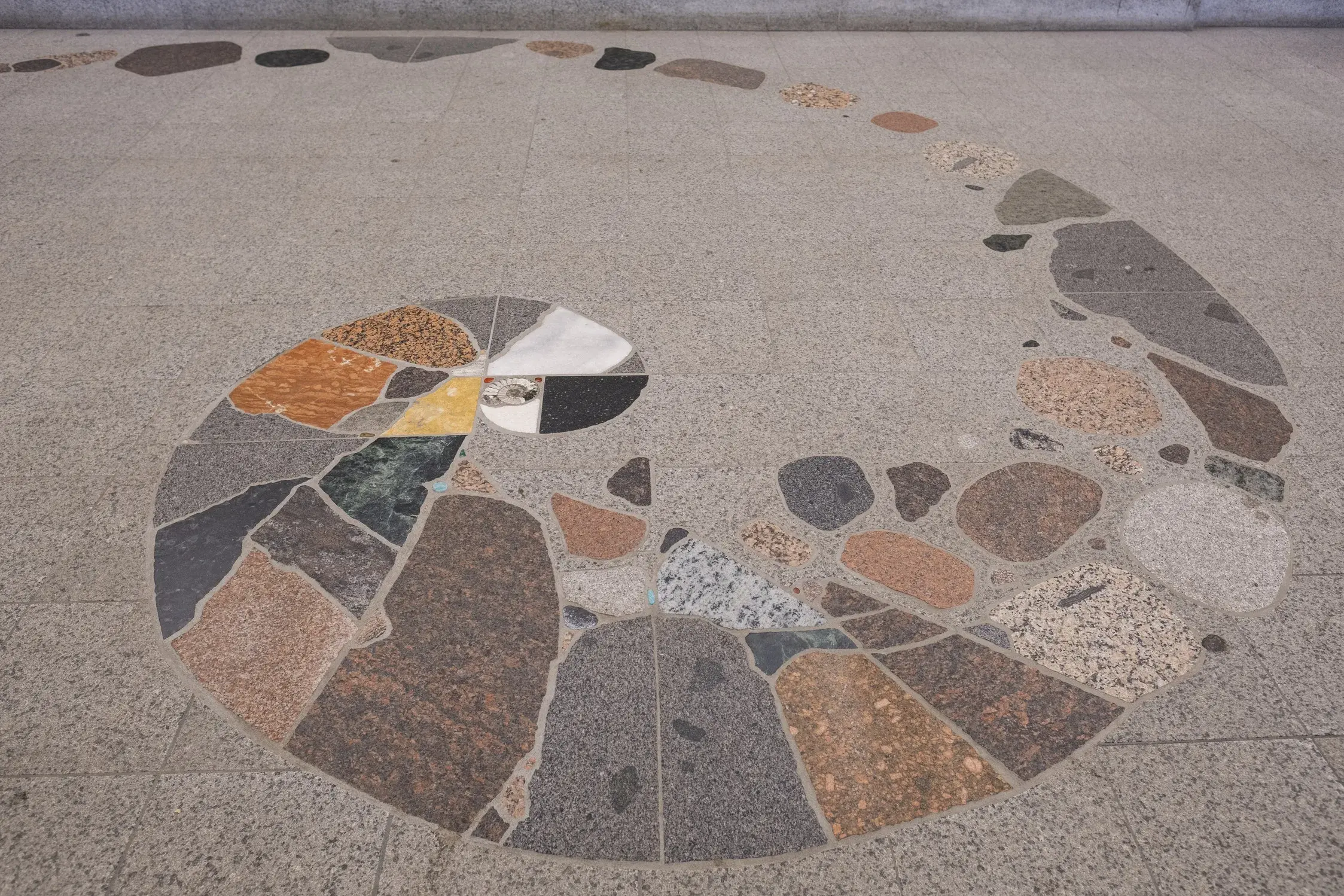
About the Art
David Culver’s Spiral (1992) is found throughout the first three floors of Mendenhall Laboratory, home of The Ohio State University School of Earth Sciences. The primary component is a swirling mosaic embedded in the entrance foyer’s granite floor. Composed of geological samples of different colors and patterns, it features smooth white marble, granite in a wide range of pinks, reds and browns, and mottled gray anorthosite, among others. Interspersed are more precious — and visually striking — minerals in shades of red, yellow and blue. These are arrayed in a “golden” spiral, a frequently occurring pattern in nature found in the shells of nautiloids and other ancient mollusks. The center of Spiral’s mosaic uses small black and white stones to recreate the cross-section of an ammonoid shell as a testament to the inseparability of biology and geology in the modern field of Earth science.
An extensive collection of polished geological samples is displayed on the second- and third-floor walls. Many of these samples correspond to those used in the floor mosaic and add scientific context through informational plaques. Ultimately, though, Culver included these geological samples not as mere scientific specimens but as objects of aesthetic beauty in their own right.
Collection of The Ohio State University. Funded through the Ohio Percent for Art program.
Material
Stone
Location
Inside Mendenhall Laboratory
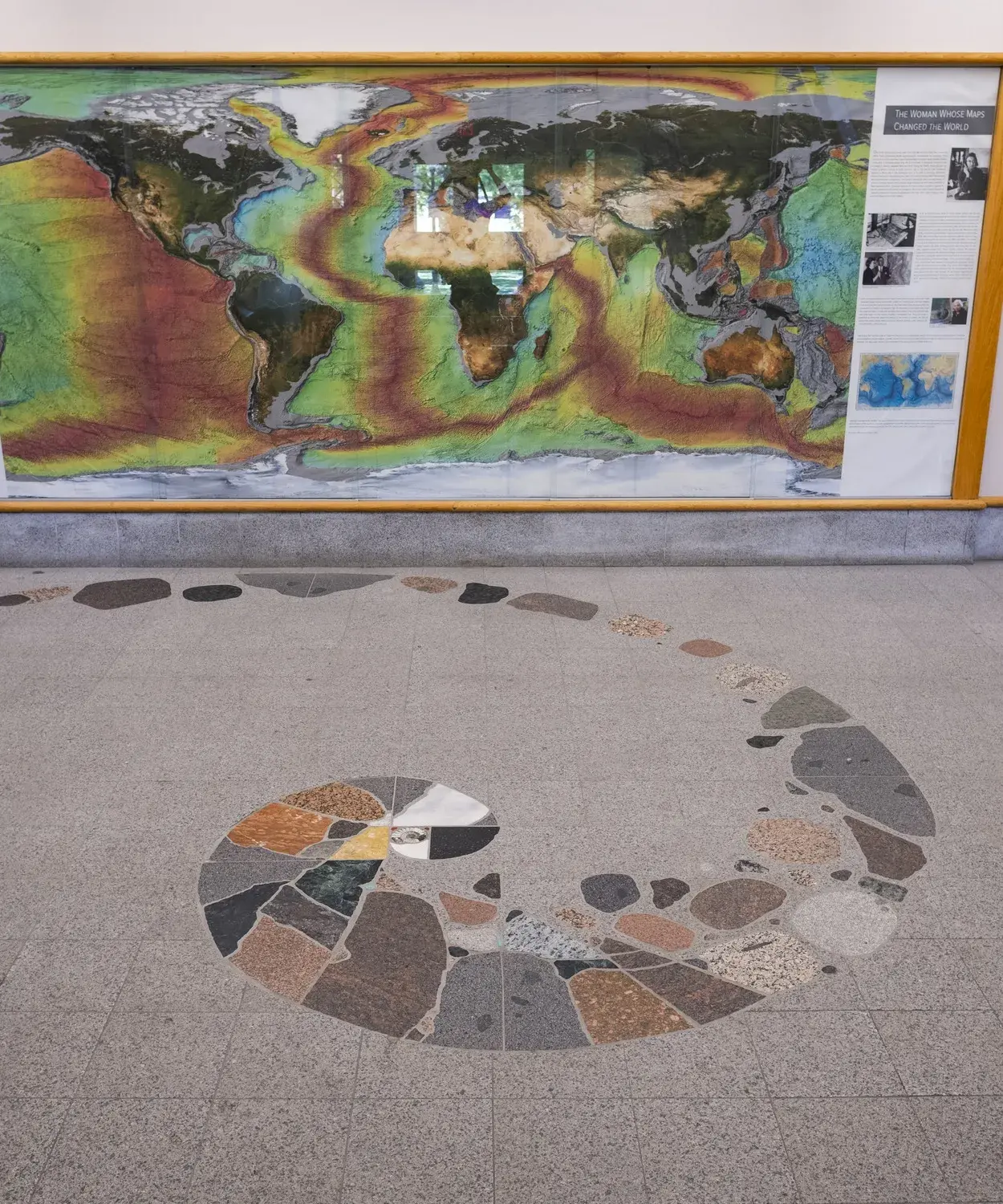
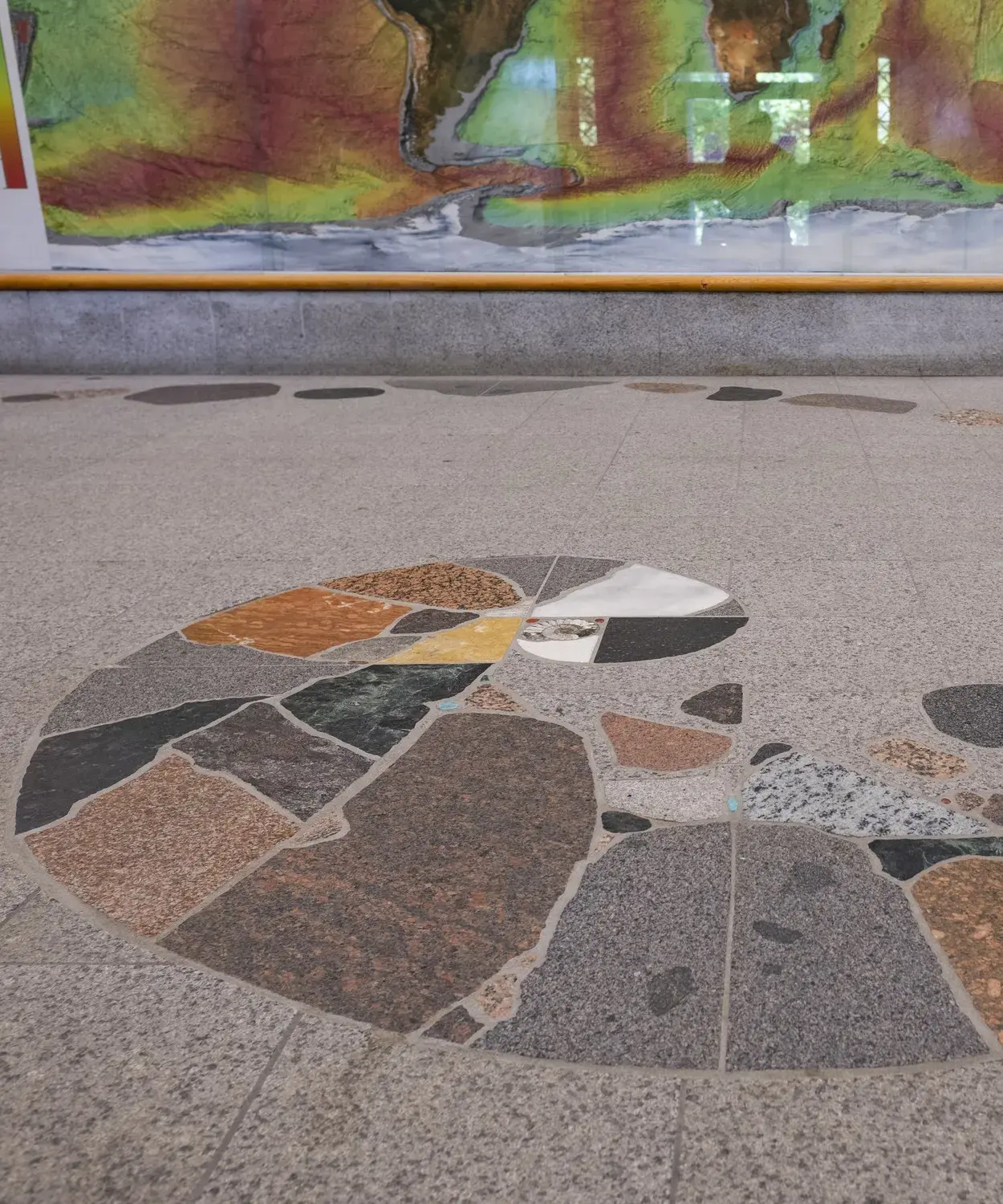
About the Artist
David Culver is an American-born artist who currently lives in Bay City, Wisconsin. He attended the Minneapolis College of Art and Design in Minneapolis, Minnesota. He uses various mediums in his works including mosaics, painting, sculpture, wood and stone. Culver has completed multiple floor mosaics, one of them being Spiral. He uses a variety of stones, glass and ceramics to create interesting variations. His paintings often employ bright colors and evoke a sense of softness. His sculptures are typically formed out of stone and experiment with the material qualities of rock. He uses wood in some of these pieces to play with the perceived weight and density of stone. His work has been displayed in cities across the United States including Columbus, New York, Chicago, Minneapolis, Dallas and Las Vegas. His work was also shown at the Seoul Museum of Art in Seoul, South Korea, in 1996.
